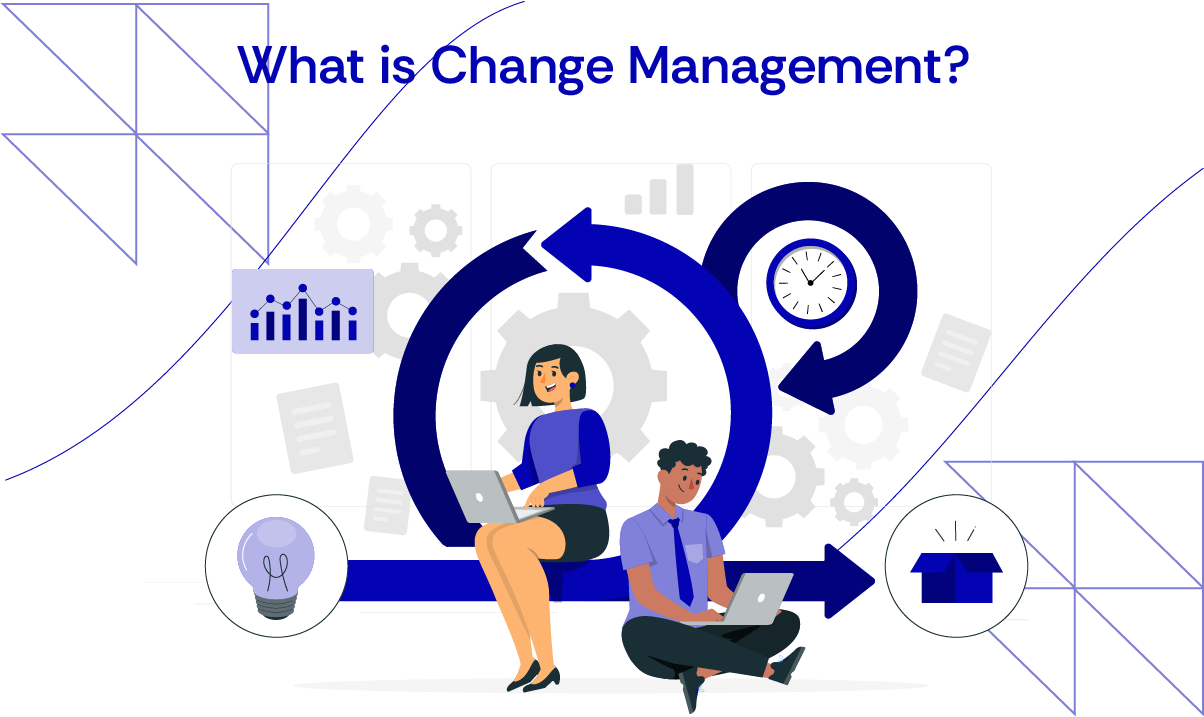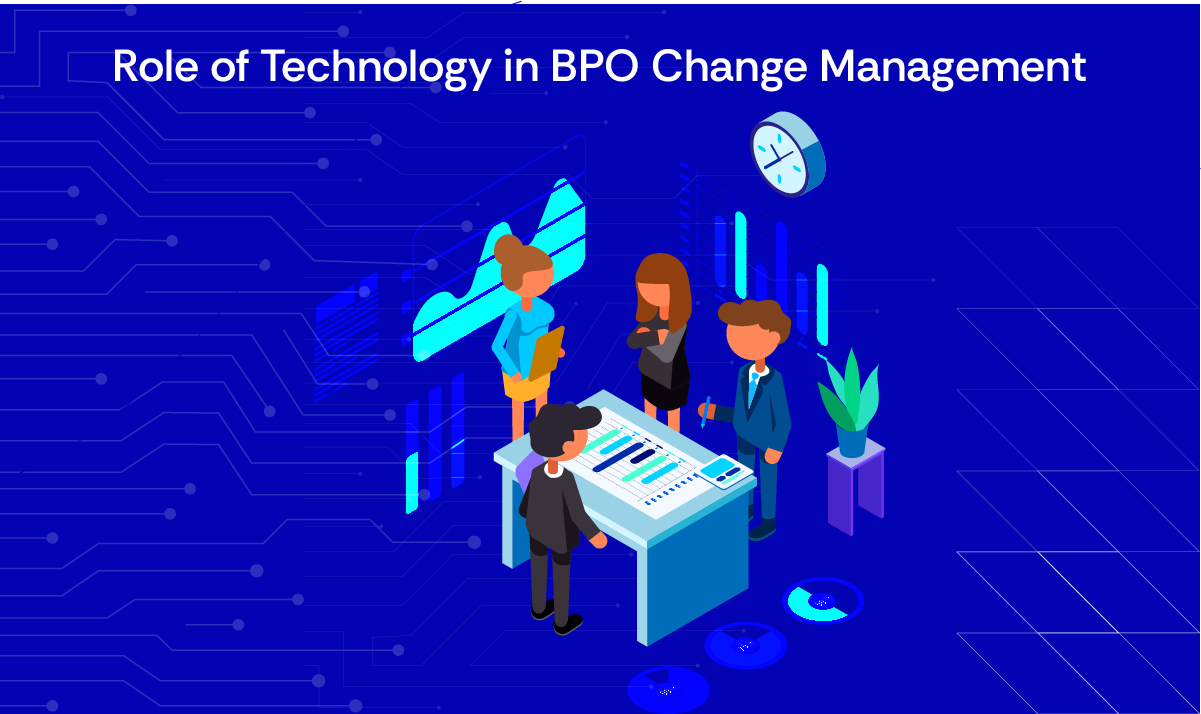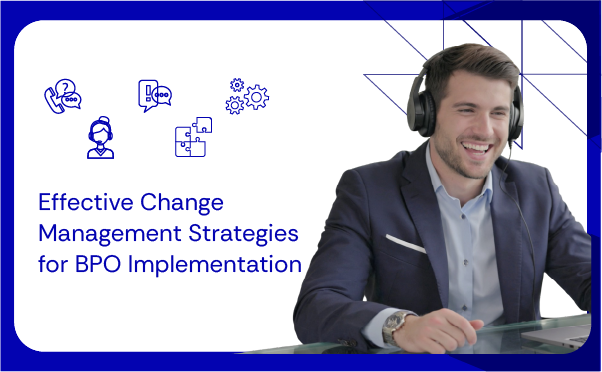Introduction:
The only consistent thing is change. It’s amazing how quickly technology evolves, with its updates, advancements, and how rapidly our money habits change. Notice how quickly we outgrow technology and how our money habits change. You can get a new bill in a matter of minutes, which could alter the direction of the stock exchange or economy. For Customer Experience and Operations leaders in D2C and consumer brands, adapting to this change in Business Process Outsourcing (BPO) transitions is critical for sustaining efficiency and customer satisfaction.
Despite most businesses attempting change, only about one-third of organizational change initiatives succeed.. Why? Management strategies that fail to meet their goals are often due to poor organizational management. One way for successful planning and execution in an organization can happen with the help of a virtual assistant.
Atidiv’s proven frameworks and transition methodologies have helped clients achieve up to 80% time savings and 99% delivery accuracy, see how here.
BPO strikes a balance between client needs and internal resources. Of course, it is crucial to create new and effective management strategies. The first step in moving forward is to understand what change management looks like.
Table of Contents:
- Introduction
- What is Change Management?
- Role of Technology in BPO Change Management
- Effective Change Management Strategies:
- What are the Common Factors that Cause Change?
- Bottom Line
- Conclusion
- FAQs on Effective Change Management
What is Change Management?

Change management is a structured approach to guiding organizational transformation whether operational, technological, or cultural, to improve outcomes and minimize disruption. This typically involves three phases: Preparation, Implementation, and Follow-through.
Management of change is a term that is used to describe any transitioning work processes, teams or technology between in-house and outsourced environments. This could be the person who manages the company’s department, technology infrastructure or internal processes. Changes in the organization and its structure include hiring new employees, merging or separating departments and changes in employee management.
The goal of change management strategies is to bring efficient change by maximizing the resources available and time to increase profits. It can be expensive if these changes are not planned and implemented on time. It is advisable for organizations to quickly implement changes if they have a plan to follow for an organizational approach.
Atidiv’s transition teams, for example, use a structured “Plan–Execute–Optimize” framework that minimizes downtime during BPO switches and maintains 95%+ quality standards, explore this case study.
Role of Technology in BPO Effective Change Management:

The role of technology in BPO is said to be crucial and multifaceted. Here, technology acts as both a driver and enabler of change within BPO organizations. Below is the breakdown of several ways in which technology contributes to the change management process in BPO projects:
- Data Analysis and Decision Making
- Training and Skill Development
- Change Management Tools and Platforms
By utilizing these tools and techniques, BPO can implement plans through a streamlined process with minimal disruptions and accelerate the adoption of new change.
Atidiv integrates AI-based monitoring and automation tools during BPO transitions, helping clients reduce operational friction and achieve measurable efficiency gains.
Effective Change Management Strategies:

Although it is challenging for individuals to step out of their comfort zones, growth needs to come out of the comfort zone. This must be acknowledged by management. Any strategy that is to be performed should be inclusive. The board of directors and managers should be clear about the vision and communicate it to their employees.
These are the effective key management strategies for implementing that every business should foster for the outsourcing process:
Effective Change Management Strategy No. 1: Follow a People First Approach:
Organizations don’t change, but people do. A BPO must understand that organizational change can occur only when every individual takes a step to alter their everyday work or tasks for a significant change. As people are the ones who drive those changes.

Prosci is a well-known change management framework that brings change by managing people’s side. This technique is used worldwide in global change management. This process can be broken into several different methods, but the major essential components are the PCT Model and AdKAR Model. Atidiv leverages the Prosci ADKAR model.
Effective Change Management Strategy No. 2: Communicate the Change Effectively:
Clearly identify why the change is happening, who is involved and what each person’s role is. Initially, employees and the organization should be aware of the benefits of change. Leaders must explain the “why”, “what” and “how” behind every BPO transition. People should understand why they need the change and how it will make an impact in their company, employees, customers and constituencies, as they can make the changes. Make the benefits of change more transparent. Avoid just emailing updates; explain the reasoning behind decisions and how they will affect employees. In general, a guide can help people understand this transformation, who should be introduced to your employees, as they will help navigate the change. Atidiv’s structured change playbooks include dedicated communication workflows that guide clients and teams through every phase of outsourcing, ensuring a consistent and unified message.
Effective Change Management Strategy No. 3: Prioritizing Employees in Change Management:

Implementing strategies for change management is not necessarily a mechanical process. Ensure a smooth transition so that everyone feels involved in this, especially the BPO team. Every employee plays an important role in different aspects of the growth. So it is crucial to consider the employees as they are valued and appreciated. This helps employees understand how much they are loved and that their contribution can help and grow the organization. Employee inclusion and acknowledgment are critical to sustain morale and productivity during transitions.
The rare cases like a pandemic have caused changes in the traditional work system. The employees are scattered across cities to enable remote working in many organizations. This makes it hard for the organizations to make distributed changes across the globe. Engage with distributed teams to value their feedback and opinions to bring together many of your employees with ideas. Atidiv’s CX transformation programs emphasize employee empowerment and engagement, which have led to retention improvements and consistent service delivery.
Effective Change Management Strategy No. 4: Make a Road Map and Follow It:
In any organization or business, planning and execution play a crucial role in development. You need a solid plan with a change road map to follow it to make sure your positive outlook and positive intentions are realized. Proper planning can lead to success. Similarly, set a clear goal and establish a clear vision of how you want to reach it and plan how you want to get there. However, it is possible to achieve success with one plan, but ensure the plan is 100%. Though it’s important to stick to a single plan, minor deviations are acceptable. This can lead to delays and lower morale.
Atidiv’s clients benefit from roadmap execution, ensuring 50% faster ramp-up times and structured governance throughout the BPO switch process.
Effective Change Management Strategy No. 5: Identifying and Changing Resistance:

Of course, an organization or business has a mix of people with different mindsets. Where few are flexible and adaptable, similarly, most employees might adapt to change and be happy with other developments, while others don’t. Not everyone adapts to change easily. Some team members may resist, even with clear communication. This resistance should be examined to identify its source. It is necessary to identify team members who are against the change or resist the change in BPO. These issues can be addressed by using a system for feedback. Monitor performance to identify and address areas of weakness.
Atidiv’s hybrid BPO change framework embeds real-time sentiment tracking, enabling managers to detect and resolve friction points before they affect project success.
Effective Change Management Strategy No. 6: Don’t Rush to Make Changes:
Avoiding rushed changes is a crucial aspect of the BPO implementation plan. Change is the one constant factor that everyone experiences. Everyone needs to keep them updated on customer experience solutions and adjust to this new normal over time. The change should be for every employee, whether it is a team member or a manager. Pacing is crucial to avoid burnout, confusion and execution errors. Employees need time to adjust after setting goals and communicating expectations, so allow your team time to adapt. Instead, give deadlines for them to adapt or allow adequate time for adjustment. This change in each department of employees will help determine how successful and efficient the organization’s transformation is.
Atidiv’s structured implementation timelines have helped clients save up to 65% in employee costs annually while maintaining consistent productivity — learn how here.
What are the Common Factors that Cause Change in BPO?

Here are some of the common factors that cause change to foster growth and development:
- Government Policies
Any business or organization should be aware of the laws and norms imposed by the government to avoid fines and penalties. New fiscal or economic policies can have an impact on the business. -
Demand and Supply
Purchasing habits are constantly changing. Customers often abandon brands when better alternatives emerge. This leads to losing clients. Companies are more likely to maintain their market share if they monitor changes in customers behaviour and manage their production and supply networks.
-
Technology
Adopt the latest available technologies. This helps in boosting productivity, reducing human errors and enhancing quality. The performance of various departments and workers may suffer due to these changes.
-
Repetitive Loss
A business that faces repetitive loss must bring in a change in their business model, eliminate the lost goods or services. To increase revenue, it might introduce new products or services. The board of directors and managers can bring a new streamlining to minimize losses and resolve operational issues.
-
Competitors
Keeping an eye on the competitors helps you survive the competition. Keep your businesses updated with the technology and trends. Find ways to alter the goods and services, like raising the price, reducing the price or adding new features.
-
Reduced Expenditure
Initiatives should be taken by the organization to reduce the rising expenses to boost profits. Management should bring changes to implement best practices to cut costs.
-
Strategic Organizational Change
Change occurs when organizations or companies choose to modify their organizational structure, merge with other businesses, or are acquired by another business. Companies may alter their leadership, product, employee hierarchy and even employee compensation to make this move more seamless and effective.
-
Natural Factors
Natural disasters or pandemics have the potential to impact the organization’s personnel deployment or productivity. Businesses with the potential and procedure can handle those losses or reduce those inconveniences.
Conclusion
Change management is not a one-time initiative but a continuous process of evolution, alignment and optimization. For CX and operations leaders, success lies in blending structured frameworks, transparent communication and human-centered execution.
At Atidiv, we bring over a decade of experience helping global brands manage transformation through scalable, data-backed outsourcing solutions. Our change management approach combines technology, transparency and talent enablement, ensuring every transition is smooth, measurable and built for long-term success.
FAQs on Effective Change Management Strategies:
1. What is a BPO implementation plan in change management?
Change management refers to implementing change through a structured plan with a step-by-step guide for getting things done. It lays the foundation for what is to be done when it needs to be done. This planning comes with a structure of who is responsible for what to be done, along with key checkpoints in the process. This plan is designed to keep everyone on track, reduce hiccups and make sure everything is smooth on the track.
2. How do you implement effective change management strategies?
If you want to implement a change that actually works, you need to keep everyone in the loop and updated. Involve your whole team, get leaders on board and make sure everyone gets the required information and training they need. Resistance must be addressed, set up ways to welcome feedback and surveys, and empower your change advocate. Always look for change and find ways to do things better, get everyone who is affected onboard and ensure everyone’s mindset aligns with the change.
